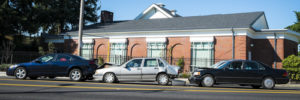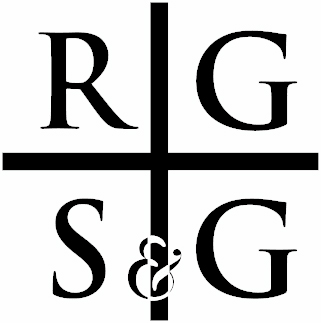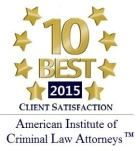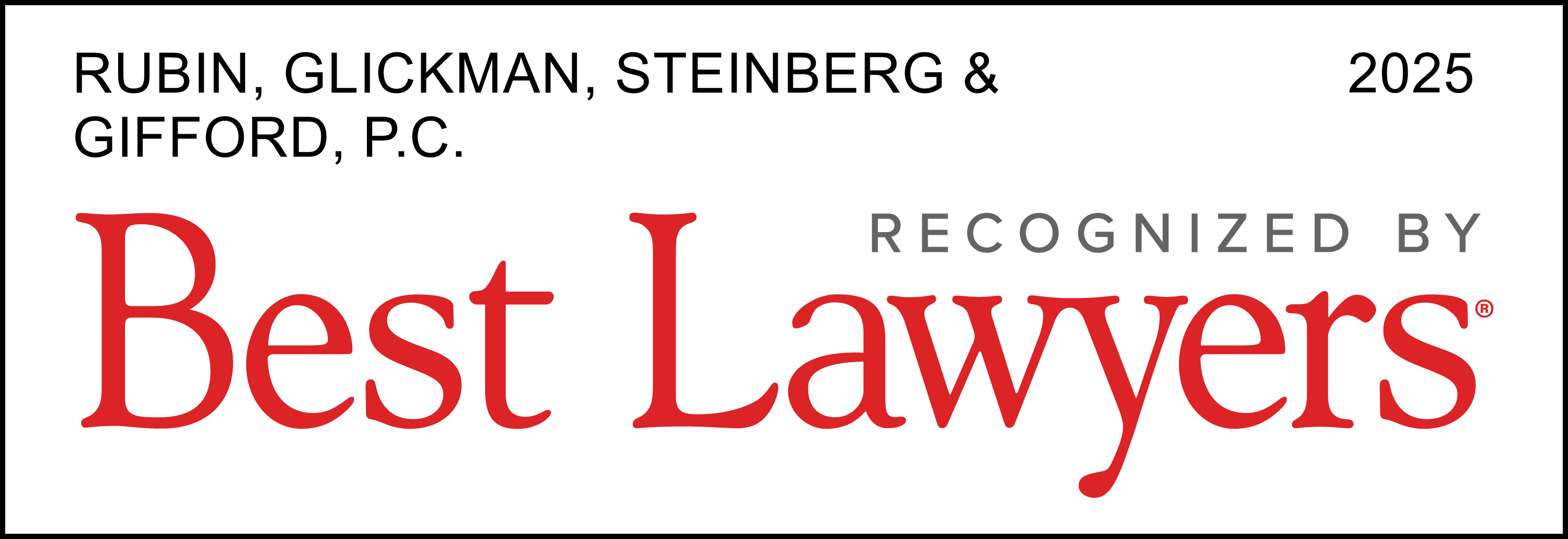 When multi-vehicle accidents occur, they typically cause injury to one or more persons. Multi-accident vehicles are typically caused when one car rear-ends another car at a fast enough velocity to then cause the rear-ended car to hit another car. This type of accident is also called a chain reaction accident. Given their nature, multi-vehicle accidents can cause a litany of legal questions to crop up. One of the primary questions that arise after someone is injured in a multi-vehicle accident is: who is at fault for the injury?
When multi-vehicle accidents occur, they typically cause injury to one or more persons. Multi-accident vehicles are typically caused when one car rear-ends another car at a fast enough velocity to then cause the rear-ended car to hit another car. This type of accident is also called a chain reaction accident. Given their nature, multi-vehicle accidents can cause a litany of legal questions to crop up. One of the primary questions that arise after someone is injured in a multi-vehicle accident is: who is at fault for the injury?
- What is a Chain Reaction Accident?
- Common Causes of Chain Reaction Car Accidents
- Understanding Comparative Negligence in Multi-Car Accidents
- Who Is Liable For The Chain Reaction Accident?
- The Role of Insurance in Chain Reaction Accidents
- What to Do if You’re Involved in a Multi-Vehicle Accident
- Contact a Lansdale Personal Injury Lawyer to Discuss Your Multi-Vehicle Accident Case in Pennsylvania
What is a Chain Reaction Accident?
A chain reaction accident, also known as a multi-vehicle accident, occurs when multiple vehicles collide in a series of rear-end crashes. This type of accident typically starts with one car hitting another, which then sets off a domino effect, leading to a multi-vehicle pile-up. Chain reaction accidents often happen at intersections, highways, or congested roads where stopping distances are limited. The more vehicles involved, the harder it becomes to determine who is responsible for the crash.
Common Causes of Chain Reaction Car Accidents
Chain reaction car accidents can be caused by a combination of factors, including driver negligence, road conditions, and external hazards. Some common causes of chain reaction car accidents include:
- Tailgating: Following too closely to the vehicle in front can lead to a chain reaction accident.
- Speeding: Excessive speed can increase the likelihood of a multi-vehicle accident.
- Distracted driving: Taking your eyes off the road can lead to a chain reaction accident.
- Impaired driving: Driving under the influence of alcohol or drugs can slow reaction times, increasing the chances of a chain reaction accident.
- Poor weather conditions: Rain, ice, or fog can contribute to chain reaction accidents.
- Slippery roads: Roads with oil or water on them can make it harder for vehicles to stop in time, leading to multiple rear-end collisions.
- Reckless lane changes: Changing lanes without checking blind spots can trigger a chain reaction crash.
- Failure to yield: Failing to yield to other drivers or pedestrians can lead to a chain reaction accident.
Understanding Comparative Negligence in Multi-Car Accidents
Comparative negligence is a legal doctrine that allows drivers who are partially at fault for a multi-car accident to still recover compensation for their injuries. In a chain reaction accident, multiple drivers may be partially at fault, and comparative negligence laws allow them to recover compensation based on their percentage of fault. For example, if a driver is 20% at fault for a chain reaction accident, they may still recover 80% of their damages from the other drivers involved.
Who Is Liable For The Chain Reaction Accident?
Determining the causation of an injury in a multi-vehicle accident can be hard to pinpoint from a factual perspective. If the driver that caused the initial accident admits to being distracted or impaired while driving, establishing causation may be easy as that driver may appropriately be assigned 100% liability. However, what happens when one of the drivers does not admit to driving negligently or there is proof that multiple drivers involved in the multi-vehicle accident were driving negligently at the time of the accident? Moreover, what happens if the cause of the accident is merely the result of poor weather conditions?
In some states, contributory negligence rules may apply, where any fault on the claimant’s part can completely bar recovery of damages.
In cases where multiple drivers may be to blame for injuries sustained in the accident, liability is assigned differently depending on which state the lawsuit is filed in. If the liable drivers are not the ones who have been injured in the crash, then these drivers may be held jointly and severally liable as joint tortfeasors for damages to the injured party or parties. This means that while a jury or judge can find more than one driver at fault, one of these at-fault drivers may be made to pay all of the damages awarded if none of the other drivers have assets sufficient to satisfy the damage award. Of course, if this occurs, the paying joint tortfeasor may have rights to obtain damages from the non-paying tortfeasors. This right can be exercised by filing a contribution claim against the non-paying joint tortfeasors.
In cases where multiple drivers are at fault for the multi-vehicle accident, assigning liability among the drivers for the purpose of awarding damages may be more difficult if one of them is suing the others for his or her injuries. If this occurs, assigning liability follows the comparative negligence scheme, which is different depending on the state in which the lawsuit is filed. In both Pennsylvania and New Jersey, the modified comparative negligence scheme is used to assign liability. This means that even if the injured driver is partly to blame for the accident, he or she may still recover damages for his or her injuries as long as he or she is found by the fact-finder to be not more than 50% at-fault for the accident. In those cases where the injured driver is found to be 51% or more at-fault for the accident, then he or she will receive no monetary compensation for injuries sustained in the accident.
Still, in cases where there are poor weather conditions and all drivers are exercising reasonable care, multi-vehicle accidents may still occur. If this happens, then none of the drivers can be held liable, and any injured driver will likely be unsuccessful in suing the other drivers for his or her injuries.
The Role of Insurance in Chain Reaction Accidents
Insurance plays a crucial role in chain reaction accidents, as it can help cover damages and injuries sustained by drivers and passengers. In a chain reaction accident, multiple insurance companies may be involved, and determining liability can be complex. Insurance companies will typically investigate the accident and review evidence to determine fault and assign liability. Drivers involved in a chain reaction accident should contact their insurance company as soon as possible to report the accident and initiate the claims process.
What to Do if You’re Involved in a Multi-Vehicle Accident
If you’re involved in a multi-vehicle accident, there are several steps you should take to protect yourself:
- Seek medical attention immediately: Even if you don’t think you’re injured, it’s essential to seek medical attention to ensure you don’t have any underlying injuries.
- Gather evidence: Take photos and videos of the accident scene, including damage to vehicles and any injuries sustained.
- Document the accident scene: Make a note of the location, time, and weather conditions at the time of the accident.
- Contact law enforcement: Report the accident to the police and obtain a police report.
- Contact an attorney: A car accident lawyer can help you navigate the complex process of determining liability and recovering compensation for your damages and injuries.
Remember to stay calm and follow these steps to ensure your safety and protect your rights.
Contact a Lansdale Personal Injury Lawyer to Discuss Your Multi-Vehicle Accident Case in Pennsylvania
Did you or a loved one sustain serious injuries due to a car accident in Pennsylvania? Don’t let the medical bills pile up while you wait for the negligent party or their insurance company to do the right thing. Right now, you need an aggressive personal injury attorney on your side, fighting to get you the compensation you need, want, and deserve. The skilled attorneys at Rubin, Glickman, Steinberg, and Gifford represent clients injured because of a motor vehicle accident in Newtown, Doylestown, Lansdale, King of Prussia, Norristown, and throughout PA. Call 215-822-7575 or fill out a contact form to schedule a free consultation about your case. We have an office conveniently located at 2605 N. Broad St., Colmar, PA 18915, as well as an office in Newtown, PA.
The articles on this blog are for informative purposes only and are no substitute for legal advice or an attorney-client relationship. If you are seeking legal advice, please contact our law firm directly.

Rubin, Glickman, Steinberg & Gifford P.C.
Pennsylvania Attorney's
April 7, 2025









